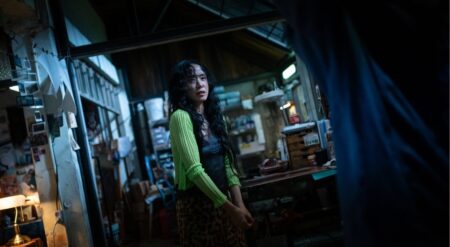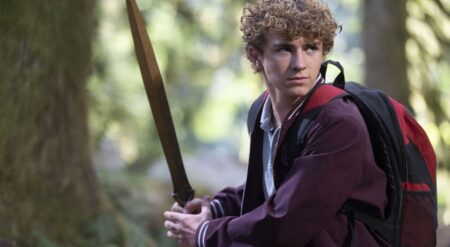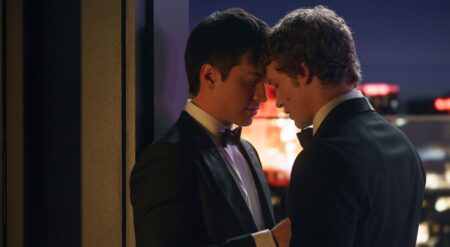For so long, this franchise has heralded the Skywalker Saga as the quintessential Star Wars story. The tale of the chosen one, Anakin Skywalker, his eventual fall, and redemption with the help of his son, Luke, form the main narrative in a galaxy far, far away. However, as soon as George Lucas opened up this universe, it expanded beyond the 67-year timespan of the films. So, when Star Wars: The Acolyte Episode 3 makes its grand reveal, the full weight of showrunner Leslye Headland‘s direction is behind it.
Maybe it’s because I played Star Wars Galaxies as my first MMORPG or read obscure Expanded Universe novels as a kid, but I’ve always been drawn to the world outside of the films and the established canon. My character, Wase Darkcloud, human beast master/bounty hunter, felt just as integral to a galaxy far, far away as Boba Fett. So naturally, I’ve been a long proponent that the world outside the films is as rich and authentically Star Wars as anything seen in your favorite films.
However, for the Disney+ era of TV shows, as great as Andor is, it doesn’t substantially push the canon. It stands out because of its themes and its use of its cast and characters, but the events of the Skywalker Saga and even Rogue One, where its characters feature, are foregone conclusions. The Acolyte Episode 3, though, pushes the canon and begins to deliver on those darker themes you may be itching for in the Star Wars franchise. While the Skywalker story remains powerful and iconic, The Acolyte Episode 3 suggests it might only be a blip in a much larger timeline.
The Acolyte Episode 3 takes viewers back to the home planet of Mae and Osha (Amandla Stenberg), revealing their upbringing by a coven of witches reminiscent of the Nightsisters from The Clone Wars and Ahsoka. The episode, true to its fast-paced nature, introduces viewers to the coven and its culture. Most importantly, the mothers of Osha and Mae, Mother Koril (Margarita Levieva) and Mother Aniseya (Jodie Turner-Smith), give viewers a rare look at same-sex couple relationships in live action.

Further, we see the early division between young Mae (Leah Brady) and Osha (Lauren Brady). The premiere episodes suggested they might be two sides of a similar coin, with Osha drawn to the light and Mae more prone to using the Force aggressively. This dynamic is demonstrated directly through their use of the Force on a native fauna. Osha initially uses the Force to hurt a creature but shows remorse, while Mae steps in more aggressively before being dissuaded. This could foreshadow future scenes where Osha pleads with Mae to stop or vice versa. Either way, their differences go back to their childhood.
As The Acolyte Episode 3 progresses, viewers learn that this coven of witches is one of the Force-sensitive sects in the High Republic era. Over two hundred years before Jedha’s destruction in Rogue One, there was a Convocation of the Force comprising various Force-using factions different from the Jedi Order there. Each had a unique perspective on the Force, none governing the others, showcasing the vast possibilities of Force users in the galaxy. This diversity highlights potential historical events that led to the Jedi being the predominant Force users by the time of A New Hope and the height of the Skywalker saga.
Even our own history is filled with erased histories, and in the span of the nine Skywalker films, the memory of the Jedi was quickly erased. So, it’s not a stretch to think that something significant happened before we knew about the prophecy of the Chosen One. These factions viewed the Force differently from the Jedi, adding depth to the narrative and showing the diverse ways the Force can be interpreted. However, not all groups of the time agreed with the Jedi Order. That still seems to be the case even now in The Acolyte Episode 3.
Whether Mae caused the coven’s destruction remains to be seen, but this society was powerful in their use of the Force. Mae was dedicated to the coven and excited to be a witch, while Osha was not and wanted to see the galaxy. However, everything changes when the Jedi Order arrives to check on their Force sensitivity, thickening the plot and adding intrigue to the Jedi’s dark secrets.
The witches expect the Jedi to fight for access to their Force-sensitive children, and they are willing to do so. If there’s an early bid for supporting actress awards, it would go to the twin’s mothers. While being Force-sensitive was seen as a privilege in Anakin Skywalker’s time, here the witches are opposed to it. This opens the door to a different view of the Force outside the Jedi and Sith dichotomy, much like different religions in our world.

The plot’s original murder mystery is only heightened by the speculation behind the level of the Jedi’s involvement in the destruction of the coven. The question quickly becomes whether the ends justify the means for the Jedi Order. While the Empire is notorious for taking children from their parents to power their machine, the same ethical scrutiny is never given to the Jedi. The need for a separation between the Republic and the Jedi Order becomes painfully apparent by the episode’s end.
Visually, The Acolyte Episode 3 out by being set almost entirely at night. Despite the challenges of filming in low-light conditions, especially with a diverse cast, the cinematography by James Friend and Chris Teague shines. The episode is visually stunning, and it skillfully uses lighting and shadows to ensure that every character, regardless of their skin tone, is clearly visible and expressive. The careful attention to lighting ensures that every facial expression and subtle gesture is impactful, making the dark scenes both visually compelling and emotionally resonant.
Slowly but surely, The Acolyte feels like the true prequel to the Skywalker saga. It keeps the franchise feeling fresh and exciting, sparking discussions that could rival those surrounding the sequel trilogy. For fans who love having their expectations subverted, this series is a thrilling addition to the expanded universe.
We may know what happens 132 years from now, but the journey to uncover what lies in between continues to be worth telling in The Acolyte Episode 3. The future of Star Wars is bright, and if you’re open to exploring new narratives with a talented cast and director like Leslye Headland, you’re in for a beautiful experience.
As Star Wars: The Acolyte Episode 3 concludes, viewers might find themselves divided. Some may feel it undermines the Skywalker Saga and the Chosen One prophecy, while others will see it as opening up exciting new storytelling avenues. Just as the Jedi once coexisted with other Force factions, The Acolyte offers another path to follow in Star Wars.
The attention to character moments and detail in The Acolyte Episode 3 rivals anything we’ve seen in the films, suggesting that the Star Wars universe is bigger and better than ever if you’re willing to take the ride.
Star Wars: The Acolyte Episode 3
-
Rating - 9/109/10
TL;DR
The attention to character moments and detail in The Acolyte Episode 3 rivals anything we’ve seen in the films, suggesting that the Star Wars universe is bigger and better than ever if you’re willing to take the ride.








